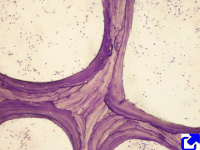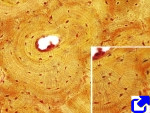What is "Buy nothing day"
A lo largo de este blog se pueden encontrar los contenidos presentados a los alumnos de Biología y Geología de 3º de ESO y otros cursos , además de diferentes noticias de contenido científico. Pretende ser un espacio de reflexión y una puerta abierta hacia la observación de nuestro entorno.
viernes, 26 de noviembre de 2021
Buy Nothing day
martes, 16 de noviembre de 2021
Diet Analysis
1. Write a food diary of a normal day in your life. Analize all your meals and look for the Nutrition Facts using the labels or internet.
2. Compare the Recommended Dietary Allowance (RDA) or Adequate Intake (AI) with the amount of nutrients of your diet. Just the following nutrients:
a. Calories
b. Total fat.
c. Saturated fat.
d. Cholesterol
e. Sodium
f. Total Carbohydrate
g. Protein
h. Vitamins A, C y D
i. Calcium
j. Iron
3. Describe the lack or the excess of the previous nutrients.
4. Describe a disease that you can suffer because of the lack or the excess of nutrients
5. Create a healthy plate using Harvard's Healthy Eating Plate as a guide.
lunes, 15 de noviembre de 2021
Trabajo sobre Nutrición 3º ESO C
Teniendo en cuenta las siguientes tablas:
jueves, 11 de noviembre de 2021
Healthy nutrition
miércoles, 10 de noviembre de 2021
Etiquetado de los alimentos
¿Qué es y qué debe llevar el etiquetado de los alimentos?
¿Cómo leer el etiquetado nutricional?
Preguntas y respuestas sobre el etiquetado de los alimentos
Nuevos etiquetados nutricionales: El Nutriscore
Alimentación saludable
viernes, 22 de octubre de 2021
Relationship Between The Systems in The Human Body
jueves, 7 de octubre de 2021
miércoles, 6 de octubre de 2021
La sangre: Tejido conectivo
La sangre es considerada por numerosos autores como un tipo especializado de tejido conectivo compuesto de elementos celulares (células y fragmentos celulares) y una matriz extracelular líquida denominada plasma. Sería el único tejido con matriz extracelular líquida.
La cantidad de sangre en el cuerpo humano depende del tamaño corporal; una persona de unos 70 Kg tiene 5 o 6 litros de sangre. La temperatura de la sangre en el cuerpo humano es de 38 ºC, un grado más que el cuerpo
Funciones:
Transporte. La sangre sirve para transportar nutrientes y oxígeno desde el aparato digestivo y los pulmones, respectivamente, al resto de las células del organismo, y productos de desecho hasta el riñón, el hígado y los pulmones.
Homeostasis. Contribuye a la homeostasis general o regulación del estado general del cuerpo. Contribuye a matener una temperatura corporal homogénea.
También mantiene un pH tisular estable, así como es el principal encargado de regular la cantidad de agua de las células del cuerpo.
Defensa. Tiene una función de protección frente a heridas mediante su capacidad de coagulación, evitando así que el organismo pierda su sangre, y de defensa frente a patógenos externos o células malignas internas gracias a las células del sistema inmunitario, los leucocitos
Elementos celulares
Las células sanguíneas se clasifican en dos tipos: eritrocitos o glóbulos rojos y leucocitos o glóbulos blancos (Figuras 1 y 2). La sangre también contiene fragmentos celulares denominados plaquetas.
Vocabulary Unit 1: Biology and Geology 1º ESO
martes, 5 de octubre de 2021
Connective tissues
Connective Tissues
They show a remarkable extracellular matrix, which is a scaffolding (andamiaje) made up of collagen and elastic fibers, and other molecules.
The type and proportion of these components in the extracellular matrix set the structural, mechanical and biochemical properties of the different connective tissues.
Extracellular matrix features and cell types define the variety of connective tissues.
Functions
- they connect and keep together many organs of the body,
- they provide mechanical support to different parts of the body and to the whole body as well,
- and protect and isolate many organs.
- Furthermore, they allow communication between different parts of the body.
CONNECTIVE PROPER
ADIPOSE TISSUE
BONE
2. Trabecular bone

Trabecular or spongy bone (Figure 2) has large inner spaces known as vascular cavities.
Compact bone

Compact or cortical bone has no vascular cavities, and the extracellular matrix is organized into bone lamellae, which can be arranged straight and parallel (lamellar compact bone) or concentrically around a canal (osteonic compact bone).
Blood is regarded by many authors as a specialized type of connective tissue composed of cells, cell fragments and a liquid extracellular matrix known as blood plasma
BLOOD
Blood has many functions. The following are three salient functions.
1) Communication pathway. Blood transports nutrients and oxygen from intestine and the lungs, respectively, to the rest of the body. Wasting products are transported to the kidney and lungs. It is also the main communication pathway for chemical signals, like hormones, between distant cells in the body.
2) Homeostasis. Blood contributes to the general body homeostasis. For example, it keeps relatively constant the body temperature and pH of tissues.
3) Defense. Blood contributes in the repairing of wounds by sealing the damages with erythrocytes, platelets and plasma, i.e., blood clotting (coagulación). It also contains the cells of the immune system, that use the circulatory system to be transported and attack pathogen in any tissue of the body.
1. Blood cells
Blood cells are classified in two groups: erythrocytes or red cells, and leukocytes or white cells (Figures 1 and 2). There are also cell fragments in the blood referred as platelets.(plaquetas)
Plasma
Plasma is the liquid part of the blood and accounts for more than half of the blood volume. It is 90 % water, and the rest is composed of proteins, ions, amino acids, lipids, and gases. Plasma is the main transporter of nutrients and waste products.
lunes, 4 de octubre de 2021
Biodiversity and invasive species
viernes, 1 de octubre de 2021
Scientific names and kingdoms
Interaction function
jueves, 30 de septiembre de 2021
Epitelium
Covering epitelium
Covering epithelium shows almost :
- no extracellular matrix and
- epithelial cells are tightly attached to one another by macromolecular adhesion complexes.
- Some epithelia show a high rate of cell turnover where cell death and cell proliferation are frequent.
- Some epithelial cells can have apical specializations that allow them to function as sensory receptors, and some animals show complex structures in their epithelial layer, such as hair, feathers or scales.
Epithelia are usually classified according to two features: the number of cell layers and the shape of the cells of the more superficial layer
- Simple epithelia are single cell layers where all the cells contact the underlying basal lamina and have an apical free surface. The shape of the cells can be flat (wider than high), cuboidal (as wide as high), or columnar (higher than wide).
- Pseudostratified epithelia are simple epithelia where all cells contact the basal lamina, but not all cells reach the superficial layer because some are shorter than the others. Thus, this is a simple epithelium that looks stratified.
- Stratified epithelium contains two or more layers of cells. Only cells of the deeper layer are in contact with the basal lamina and only cells of the upper layer show free surfaces.
squamous,
cuboidal and
columnar, depending on the shape of the cells of the upper layer when observed in transverse view.
Epithelium.
KERATINIZED STRATIFIED SQUAMOUS
Basal lamina: The basal lamina is a layer of extracellular matrix secreted by the epithelial cells, on which the epithelium sits.The classification of living organisms: Taxonomy
What are the characteristics of a scientific name?
The scientific name of a species is formed by the combination of two terms The first name (capitalized) is the genus of the organism, the second (not capitalized) is its species…. The genus name is written first. The genus name is always underlined or italicized. The first letter of the genus name is always capitalized.
What does a scientific name tell you?
Scientific names are also designed to tell you something about the animal’s relationships with other animals. The scientific name of each species is made up of a generic name (generic epithet) and a specific name (specific epithet). Scientific names are often descriptive also, suggesting something about the animal.
What two characteristics must a useful scientific name have?
A useful scientific name must have two characteristics: Each name must refer to only one species. Everyone must use the same name.
Hybridization
Speciation: is the evolutionary process by which populations evolve to become distinct species
martes, 28 de septiembre de 2021
The nutrition function
Claves sobre las moléculas polares/apolares/anfipáticas
Intercambio de sustancias con el ambiente
Ósmosis

Transporte Activo
Endocitosis : Entrada de sustancias

Exocitosis






















